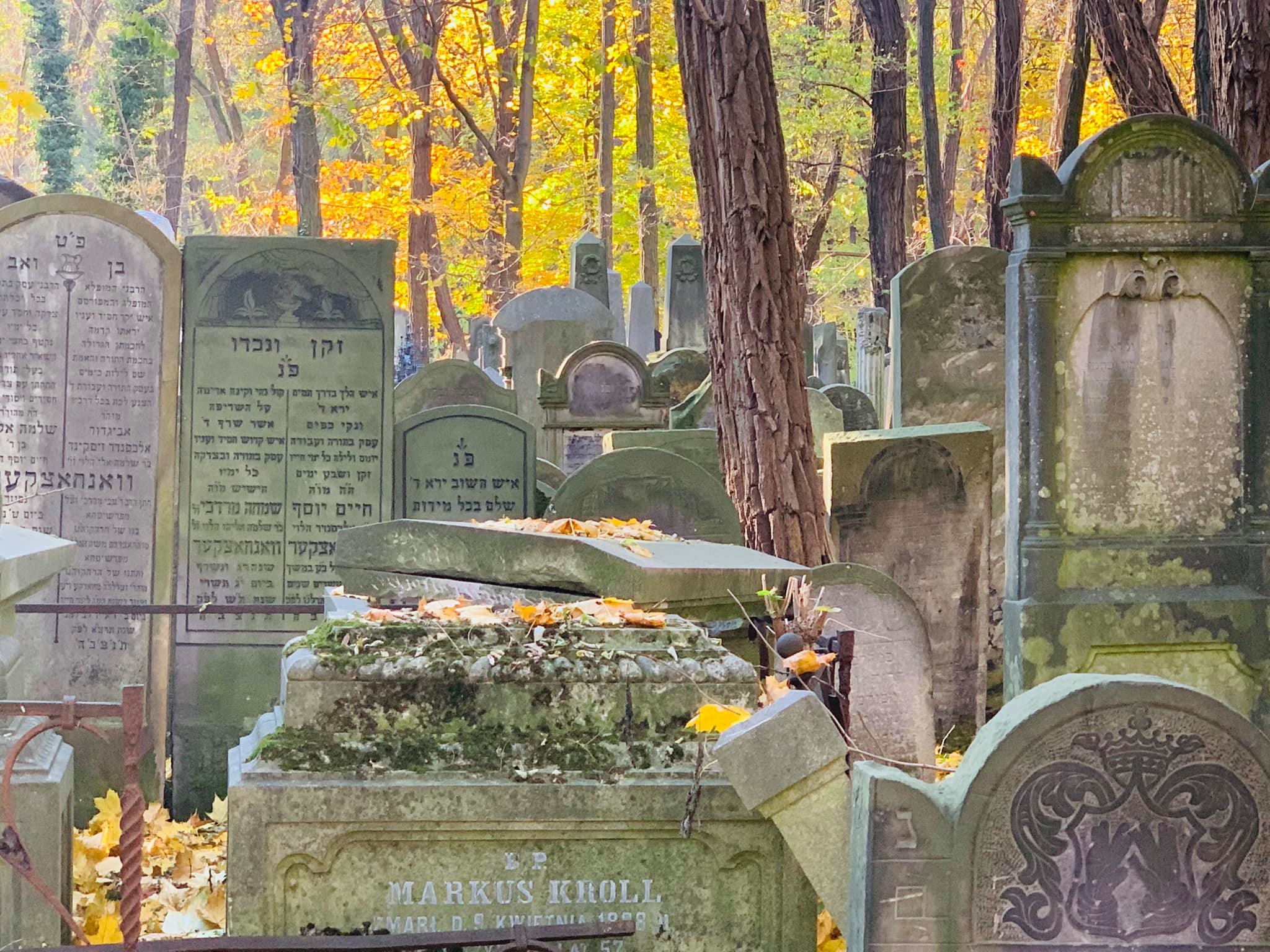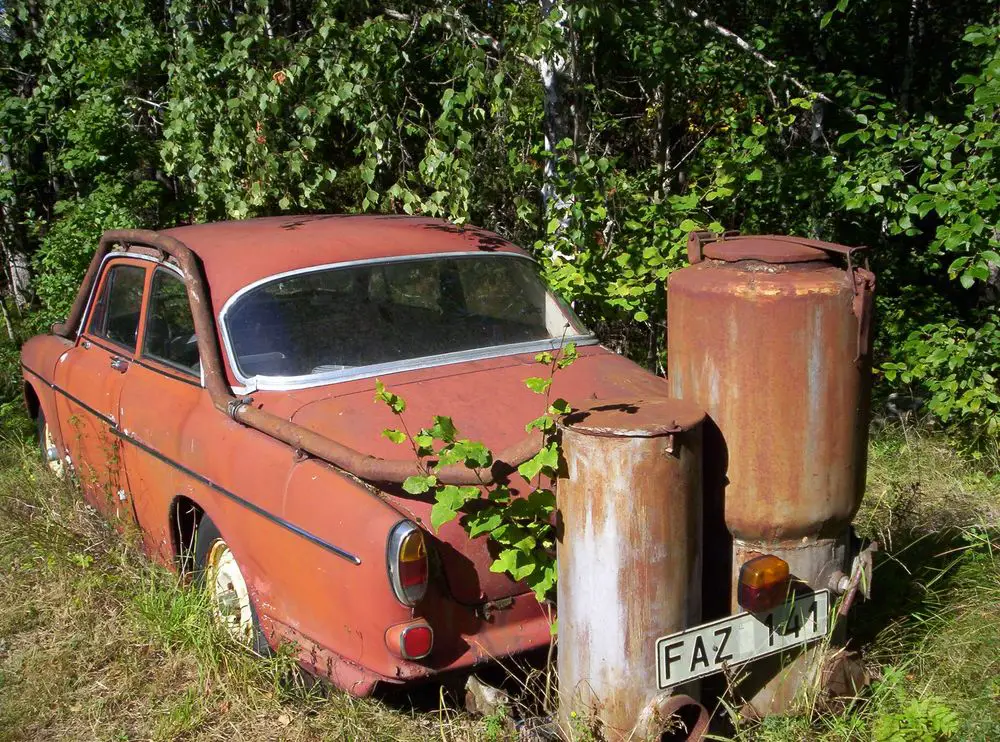The Warsaw Jewish Cemetery is one of the largest Jewish cemeteries in the world. It contains over ¼ of a million matzevot (gravestones) as well as mass graves of victims of the Warsaw Ghetto. Even though the headstones and tombs survive, sadly the burial records do not as the Nazis destroyed them all during the occupation.
Jewish people have lived in east-central Poland, since medieval times, and the early 1800s the Jewish community in the province of Mazovia increased dramatically in size and made up a large portion of the city of Warsaw’s population.
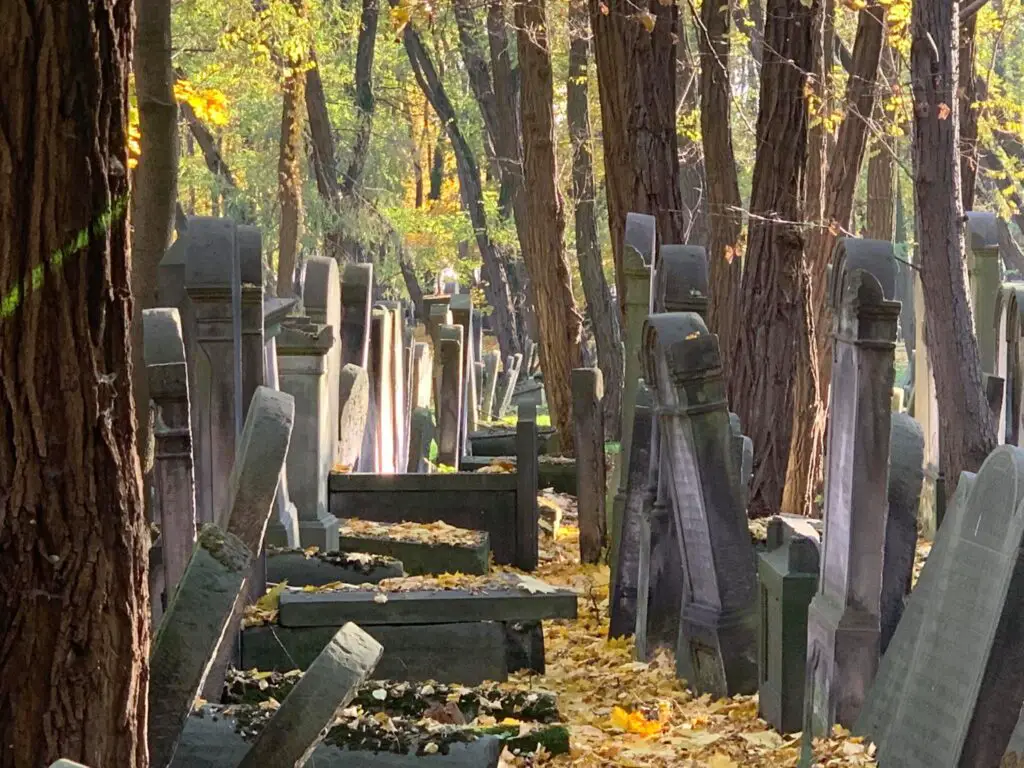
19th Century
In 1806, a cemetery was founded outside the city’s walls for the burial of all Jewish denominations, but each were given their own separate areas.
As the population of Warsaw grew the cemetery came to be inside of the city’s boundary and it is now engulfed by the urban sprawl of the city and its districts.
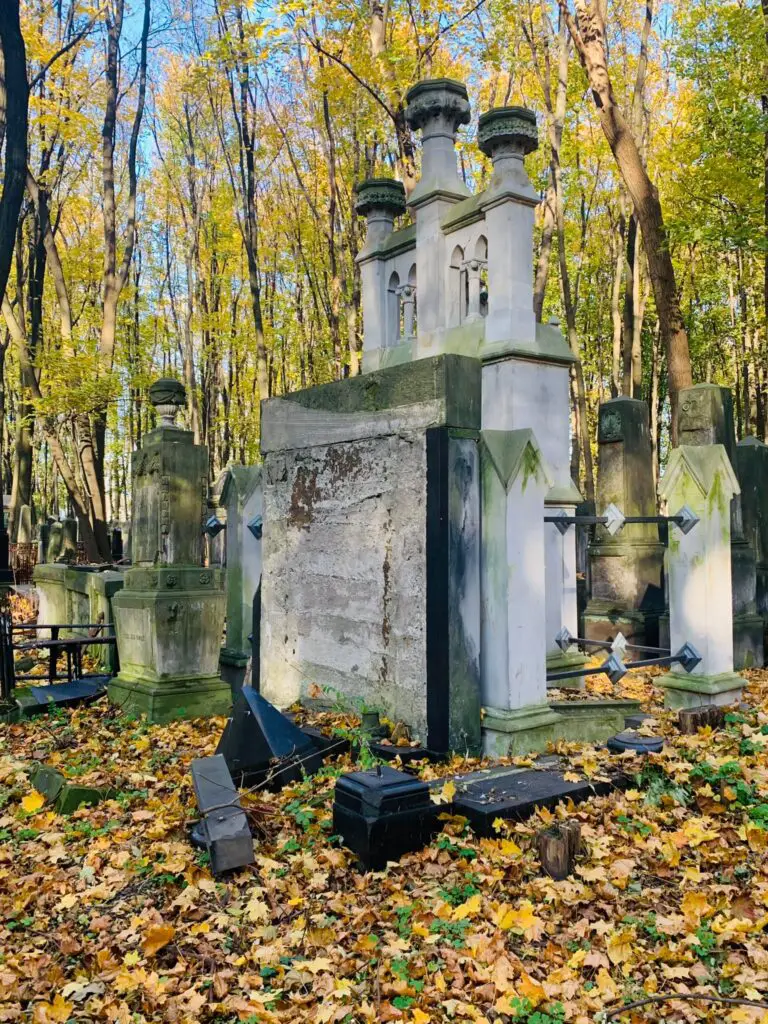

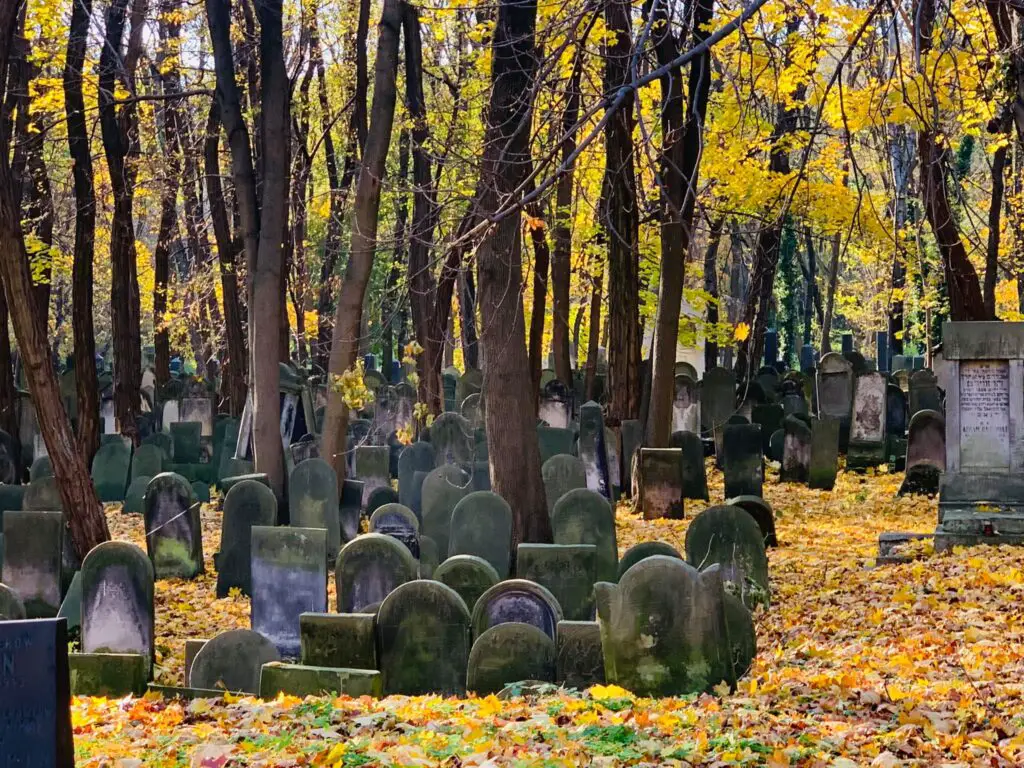

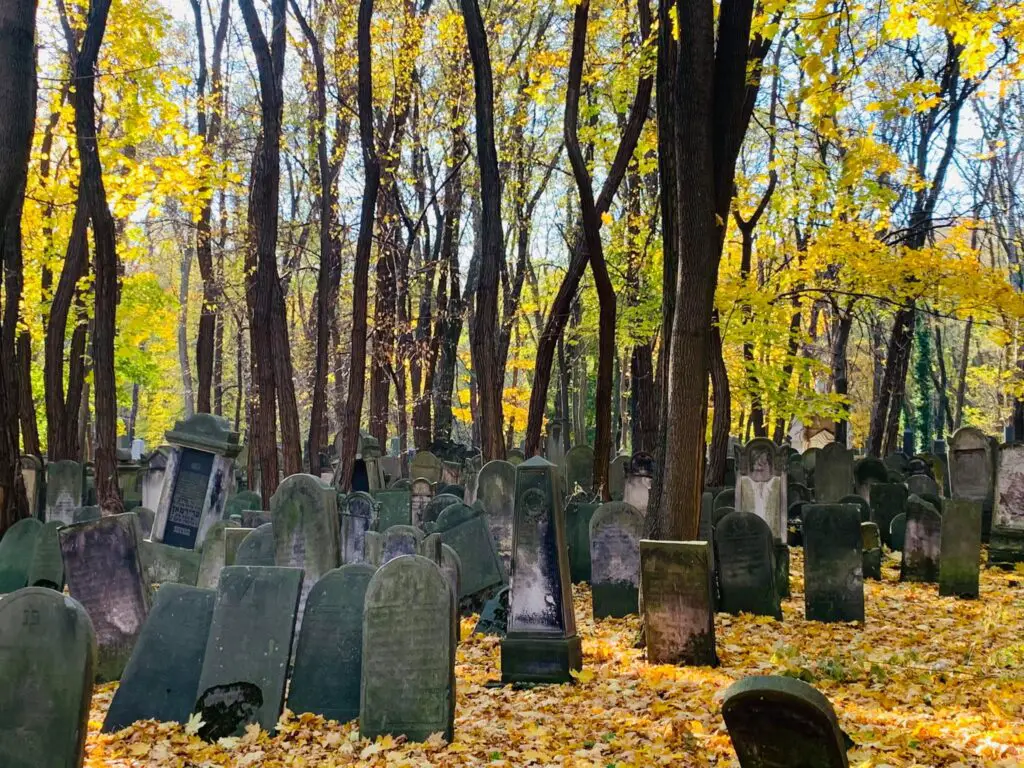
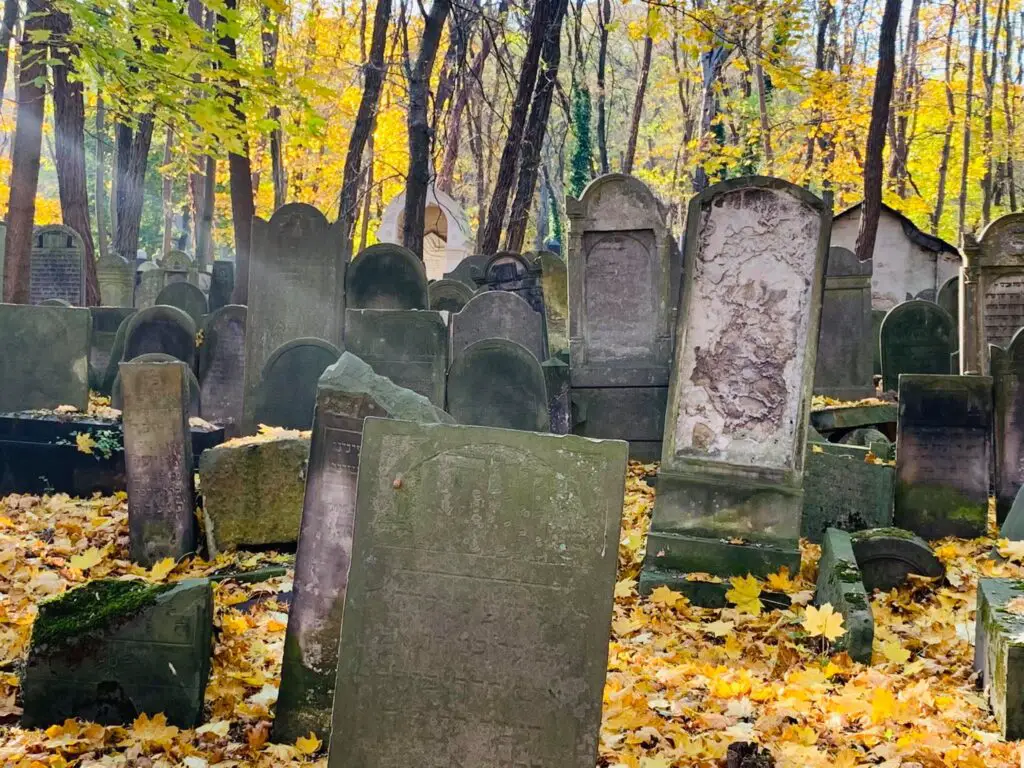

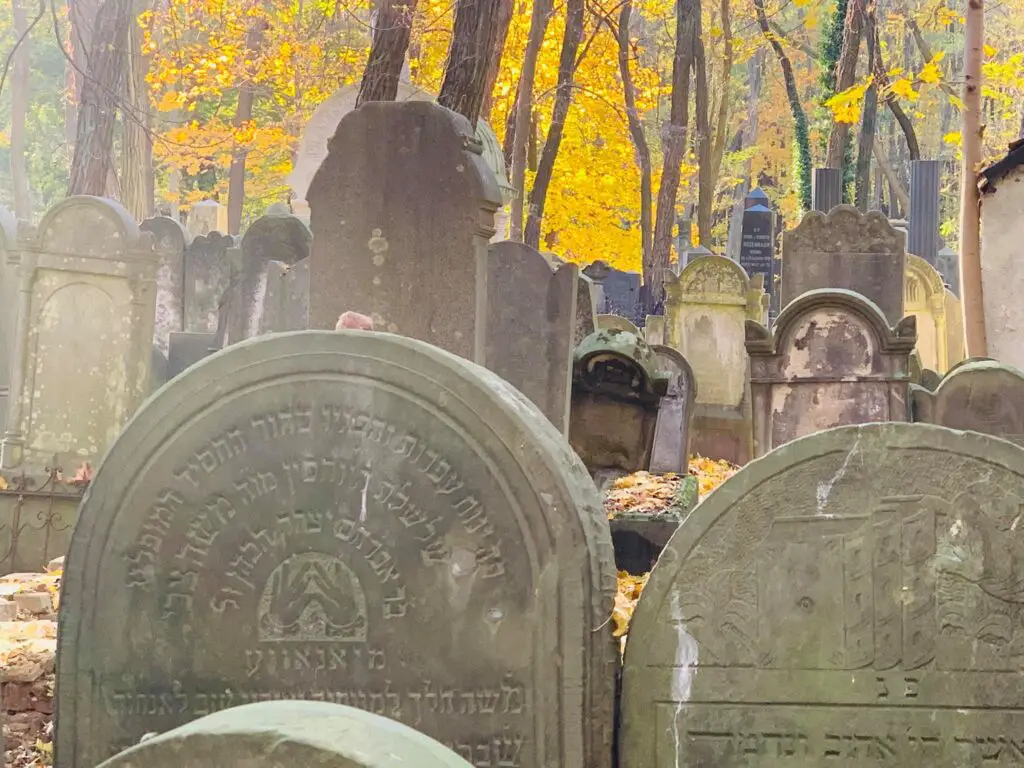
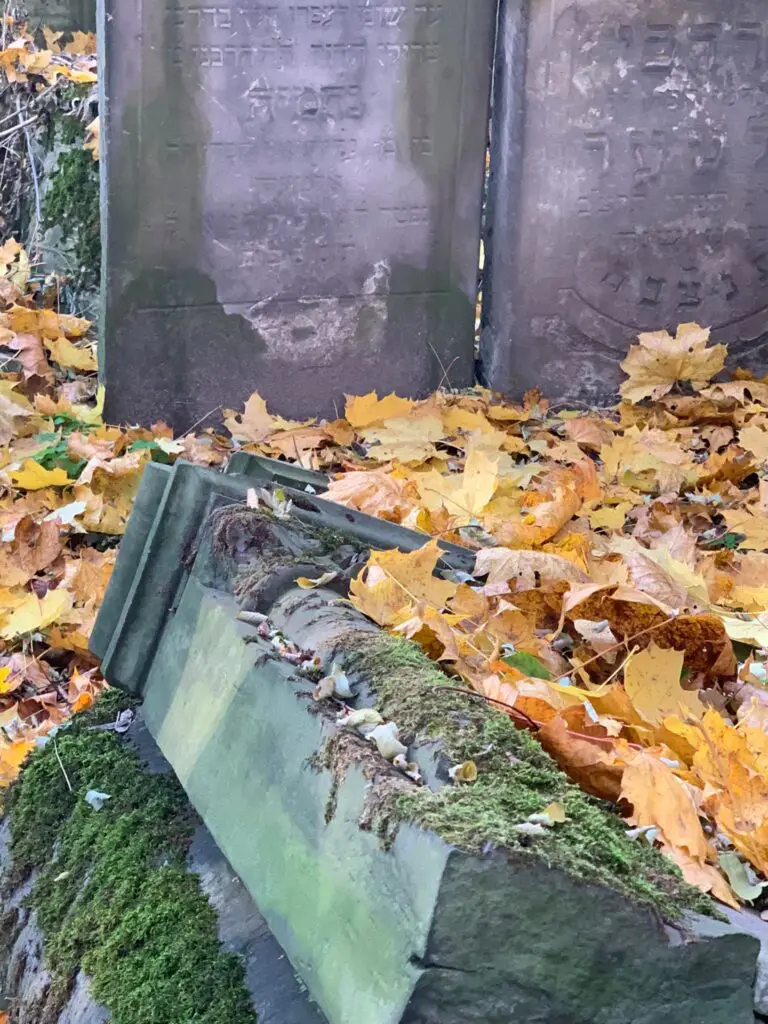
A most extraordinary place to walk through – if you can. I say that as I have never seen such a cemetery in such abandonment, frankly it is a mess. Conversely, I have never seen such a wealthy Cemetery, the headstones are elaborate, even in today’s money they would be a small fortune.
It transpires that this observation wasn’t far from truth as in the beginning it was a place for the elite and for the rich. The rest were buried in separate low-key cemeteries.
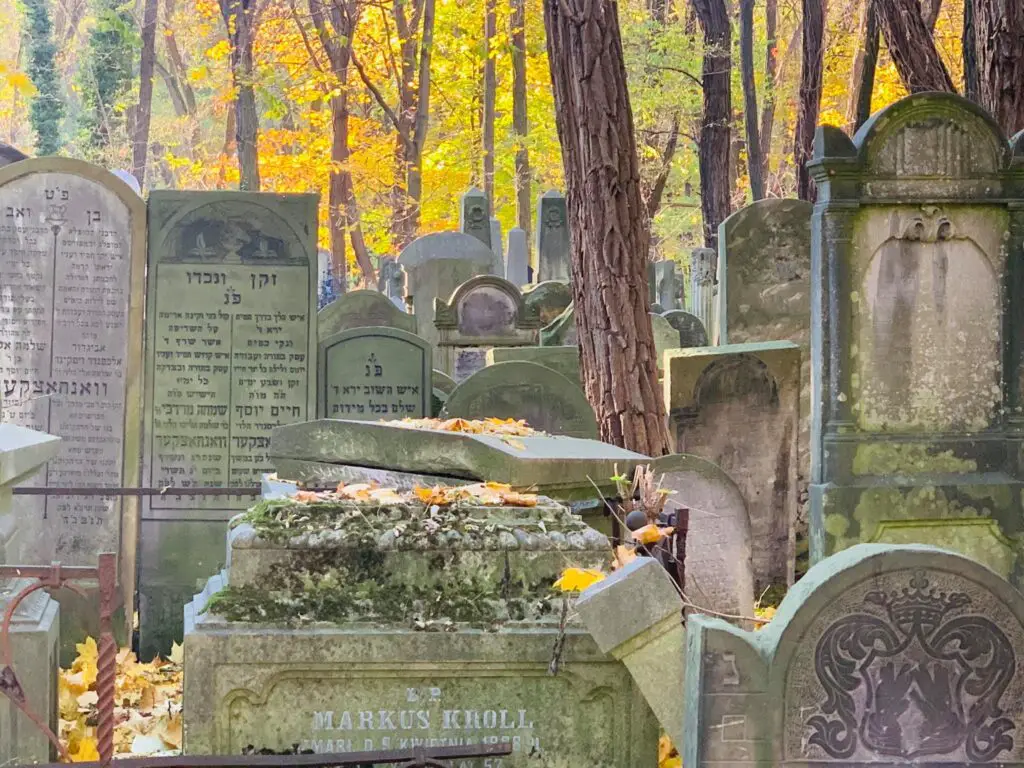
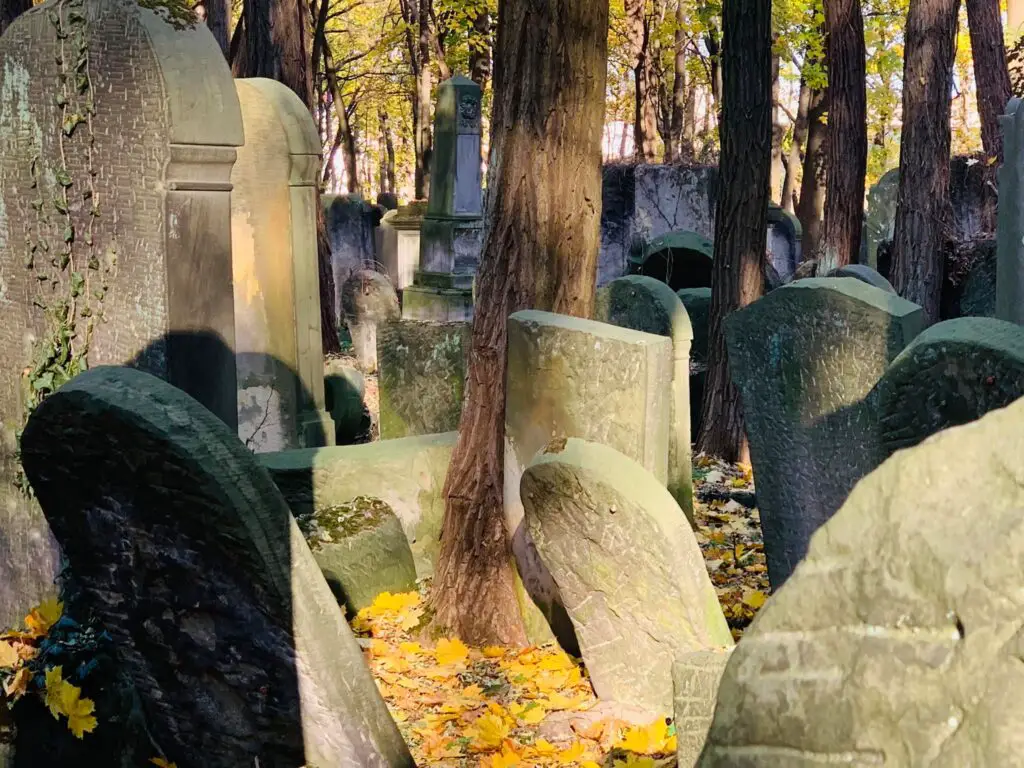
Tradition
Interestingly and unlike other cemeteries in Europe, all the graves in the Okopowa Street cemetery have their backs to the cemetery gate. The tradition of placing graves facing the cemetery gate stems from the belief that at the future resurrection of the dead, the dead will rise up and be able to leave the cemetery without having to turn around.
However, in 1819, when one community member was accidentally buried with his head, rather than his feet, facing the cemetery gate, Rabbi Szlomo Zalman Lipszyc, the first Chief Rabbi of Warsaw, ruled that all future burials should be done the same way, to avoid causing embarrassment to the first one buried in this manner ~ Gold, Rabbi Yoel. “Chesed Shel Emes”. Ami Living, January 25, 2017, p. 16
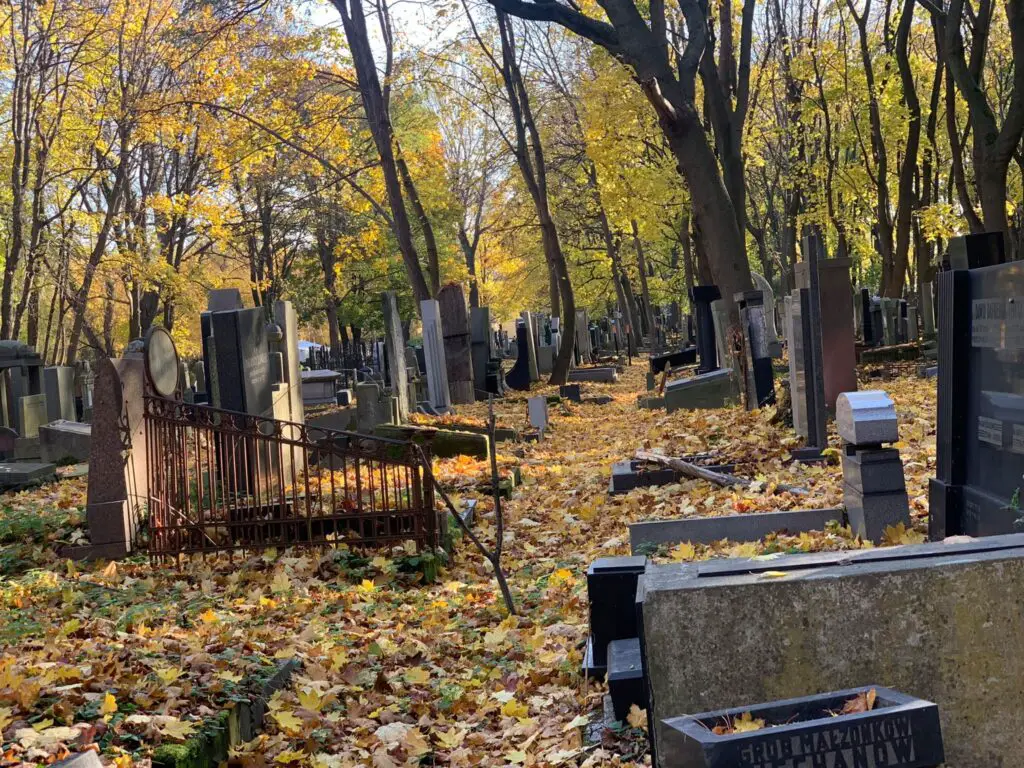
Overgrown
The area is being taken over by secondary woodland which gives it a unique feel, slightly apocalyptic and you will see the trees growing over, around and through the headstone, nature stops for no one.
I was shocked by this, bearing in mind how such cemeteries are attended and cared for. Then it struck me – there were no families to look after them – they were all murdered by the Nazis either in the town or at Treblinka death camp an hour northeast of the city. It was a stark realisation.
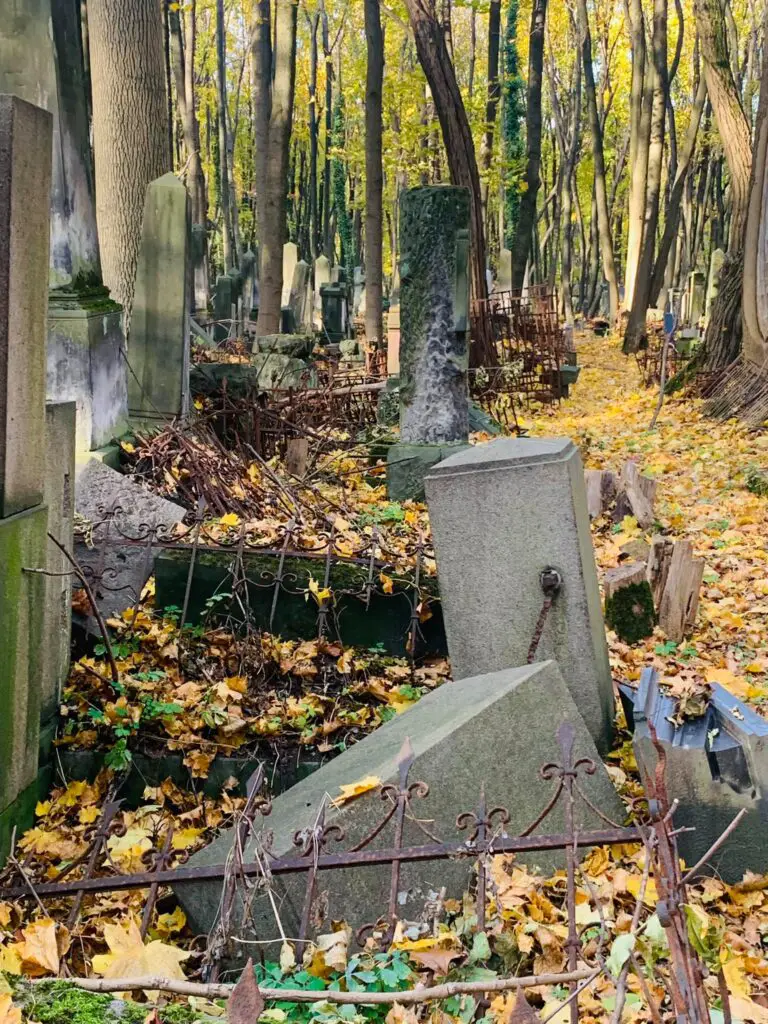
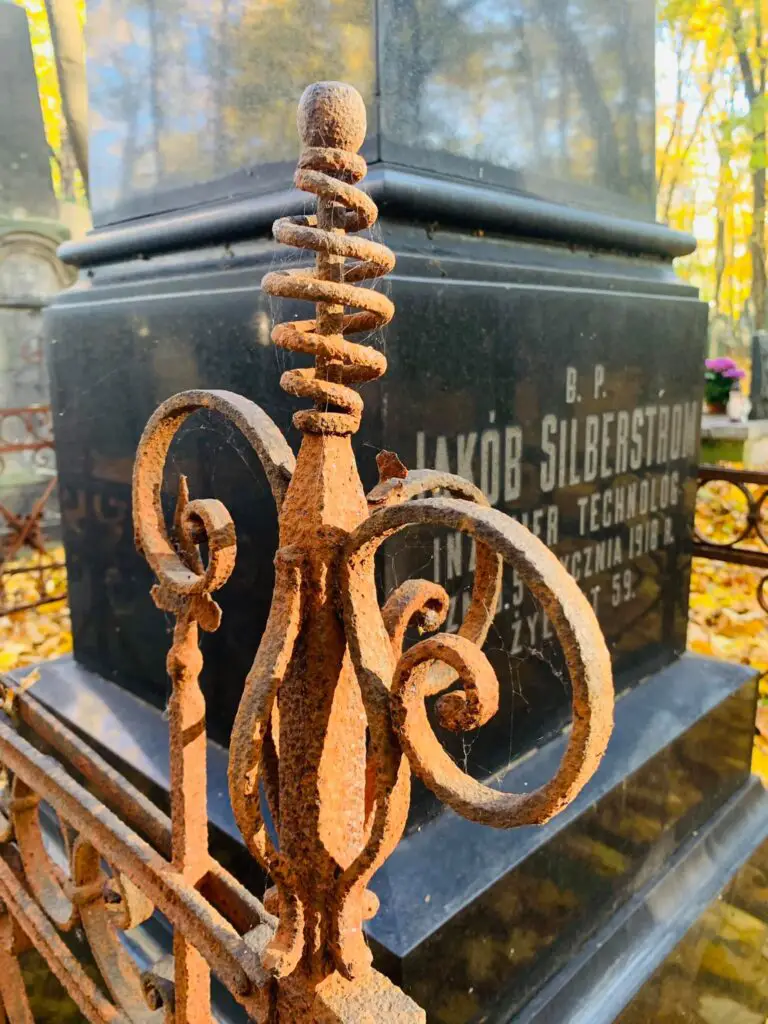
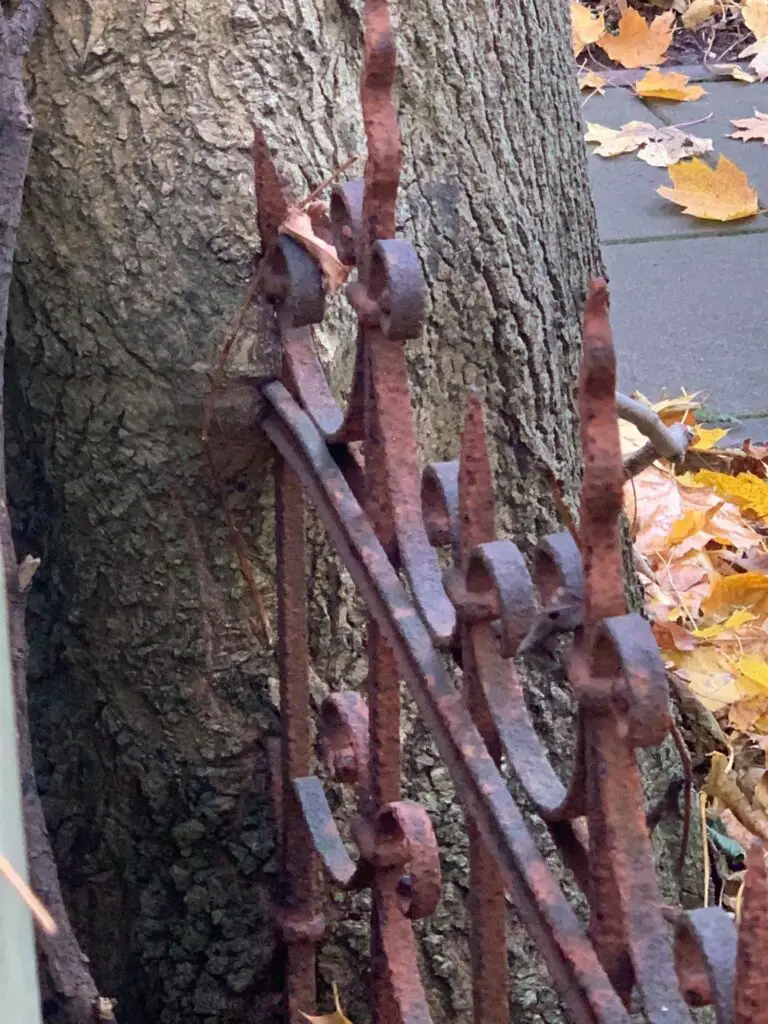
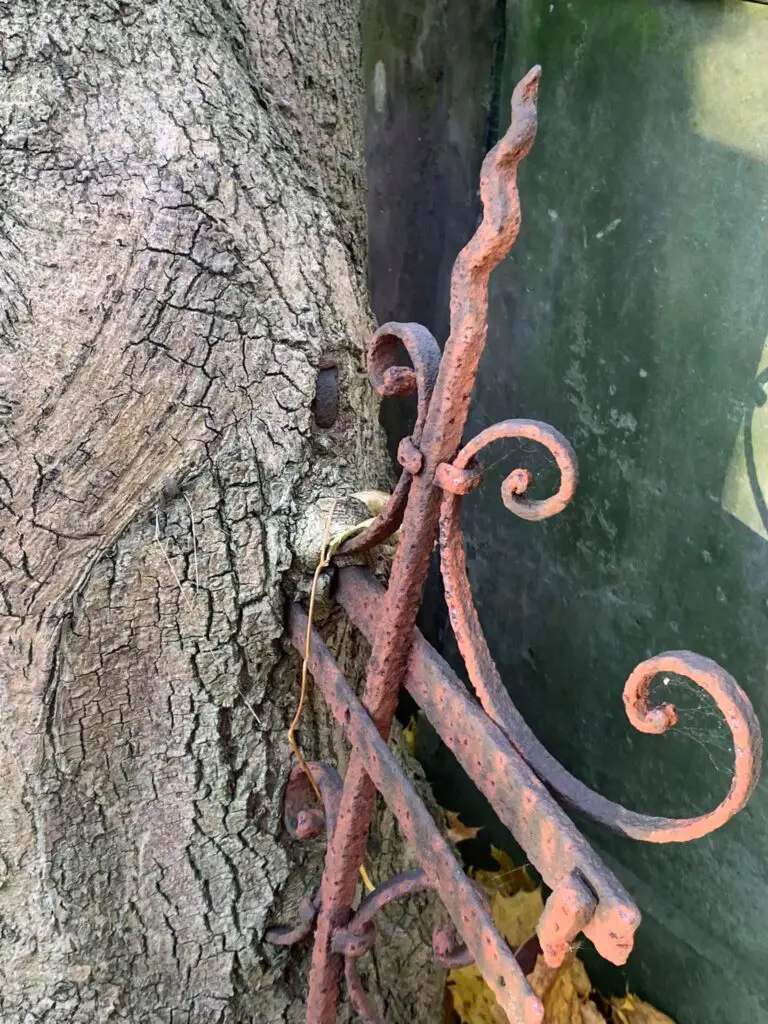
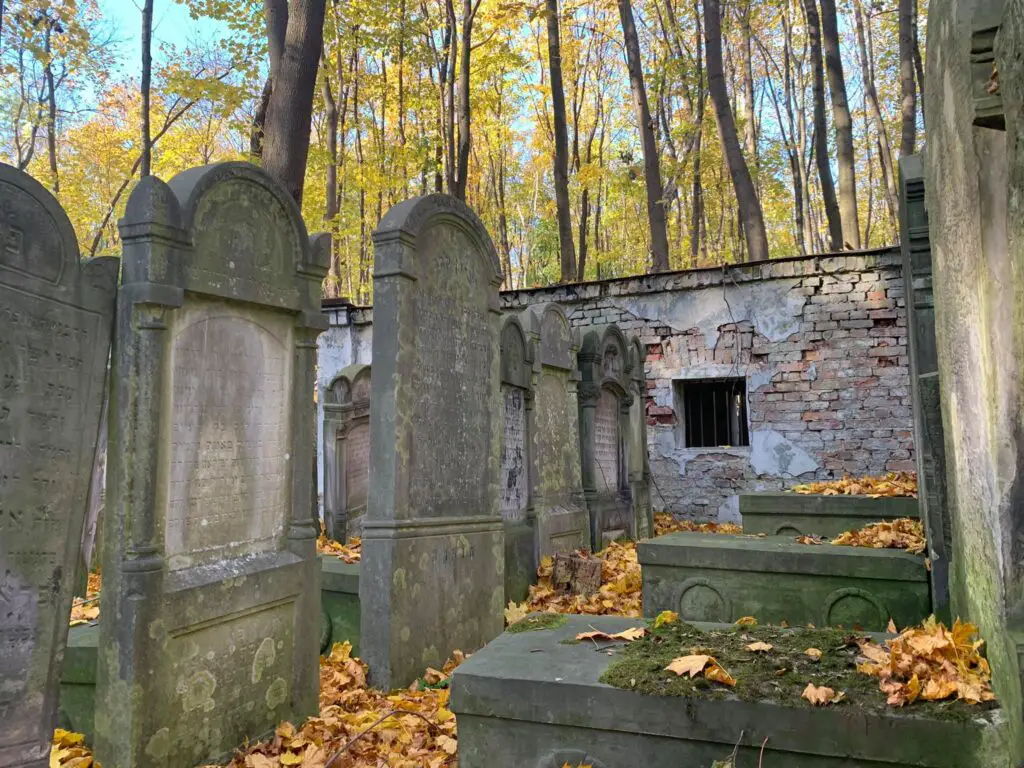
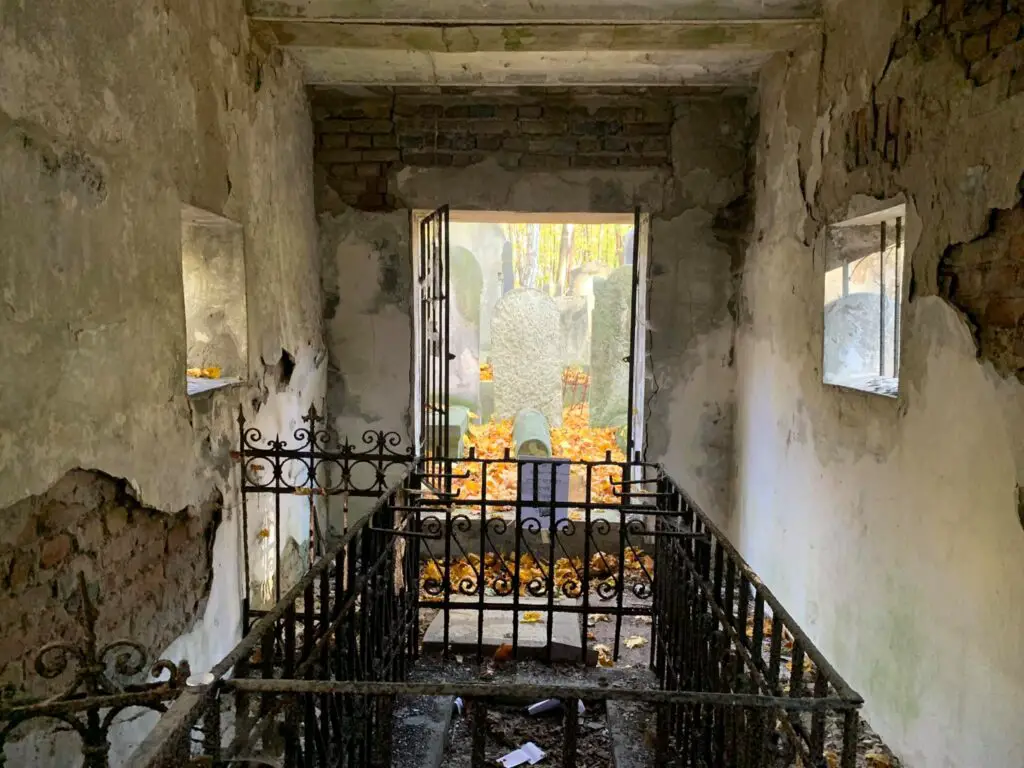


Neglected
To put this into context – when the Nazis invaded Poland, the Jewish population of Warsaw was around 350,000, by the time the Nazis left there were only 11,500 Jews left in Warsaw, the rest had been murdered or had died of disease or starvation.
This helps to explain why the cemetery was abandoned after the war, there literally was no family members left to care for it.
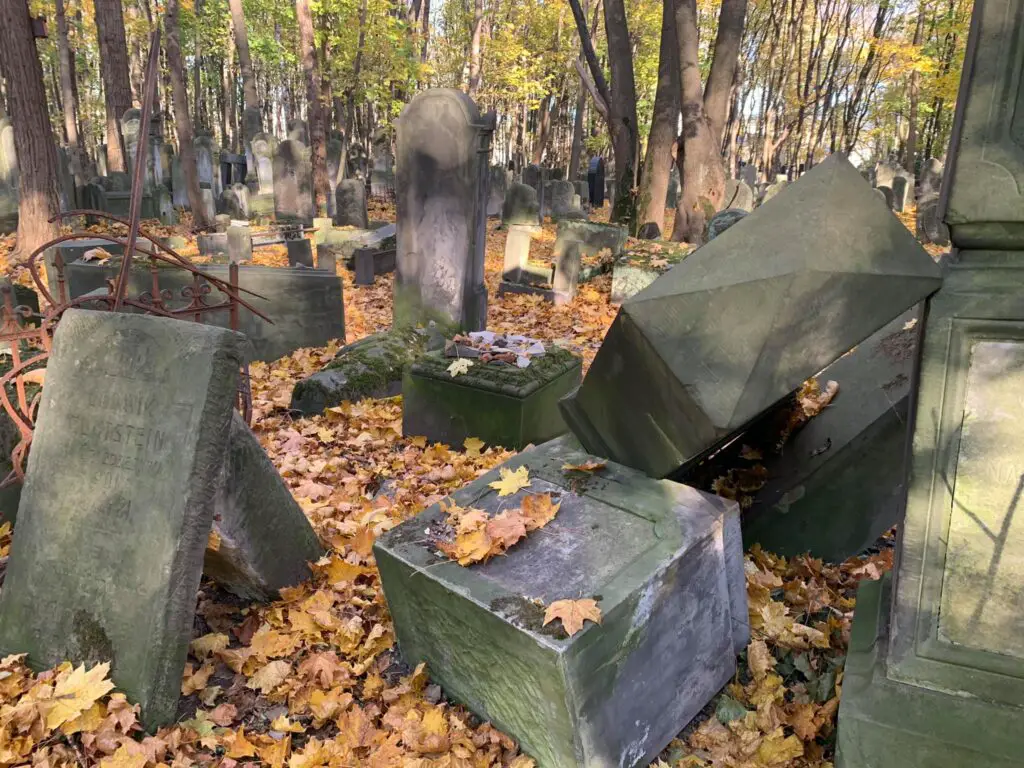
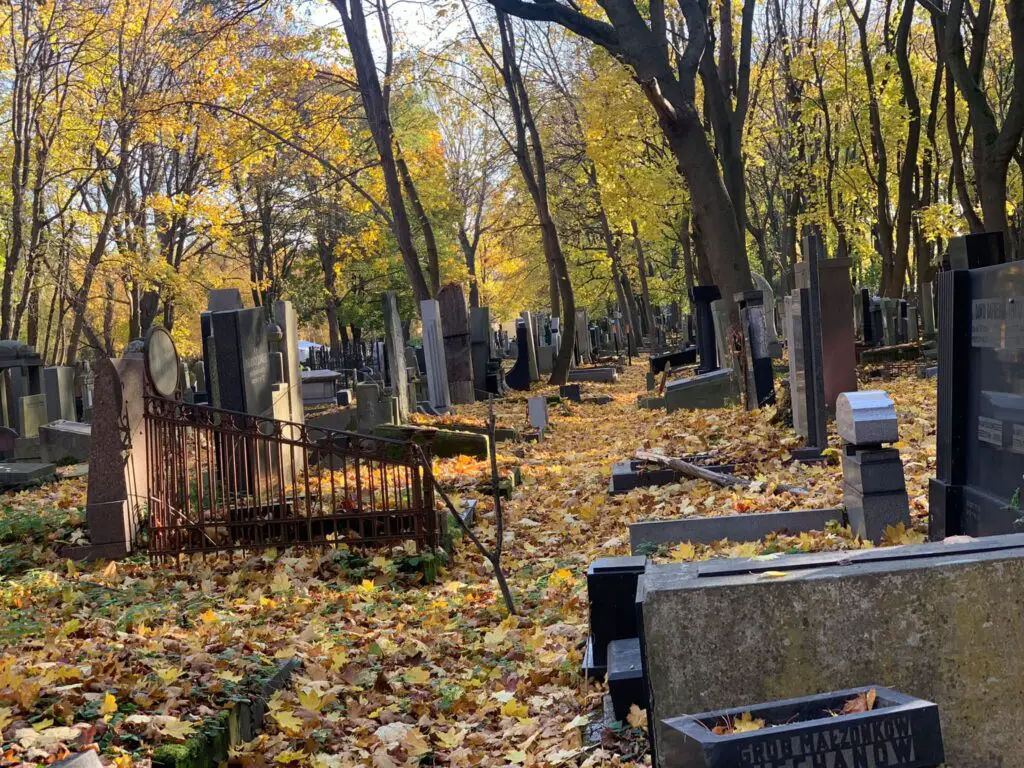
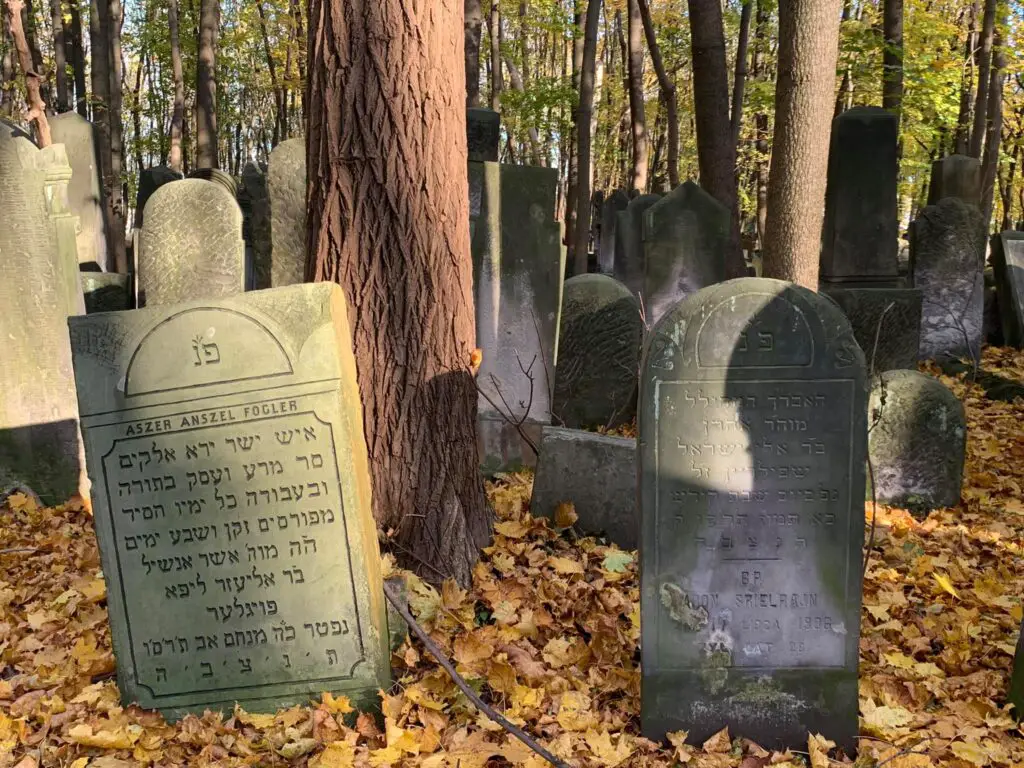
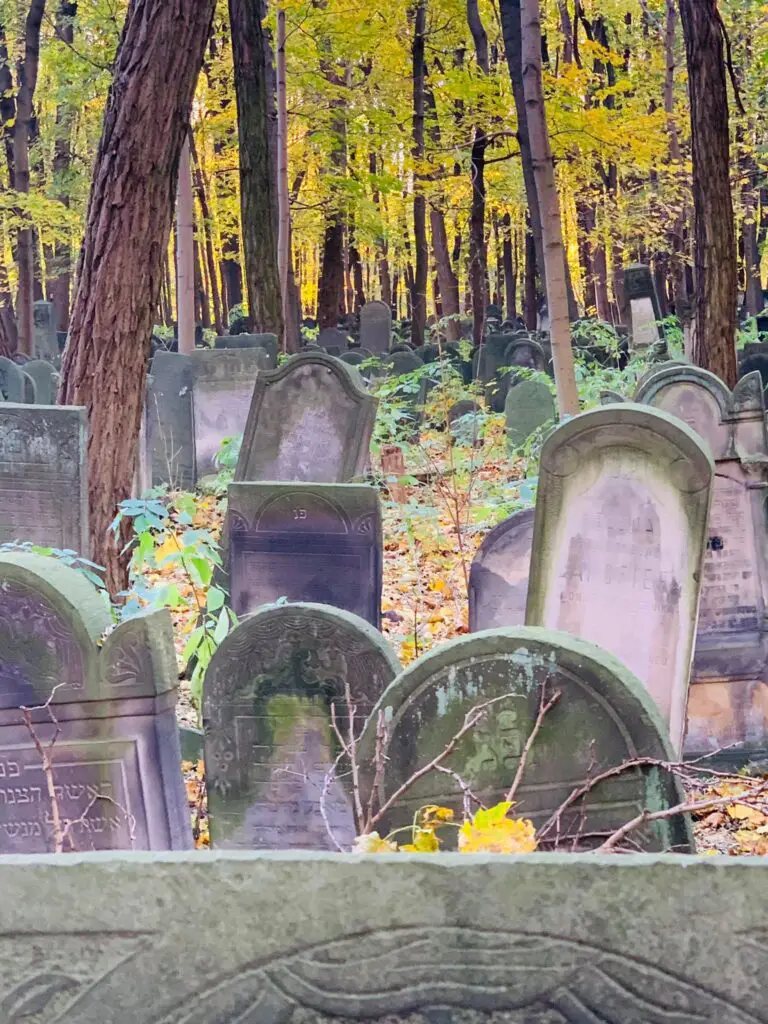
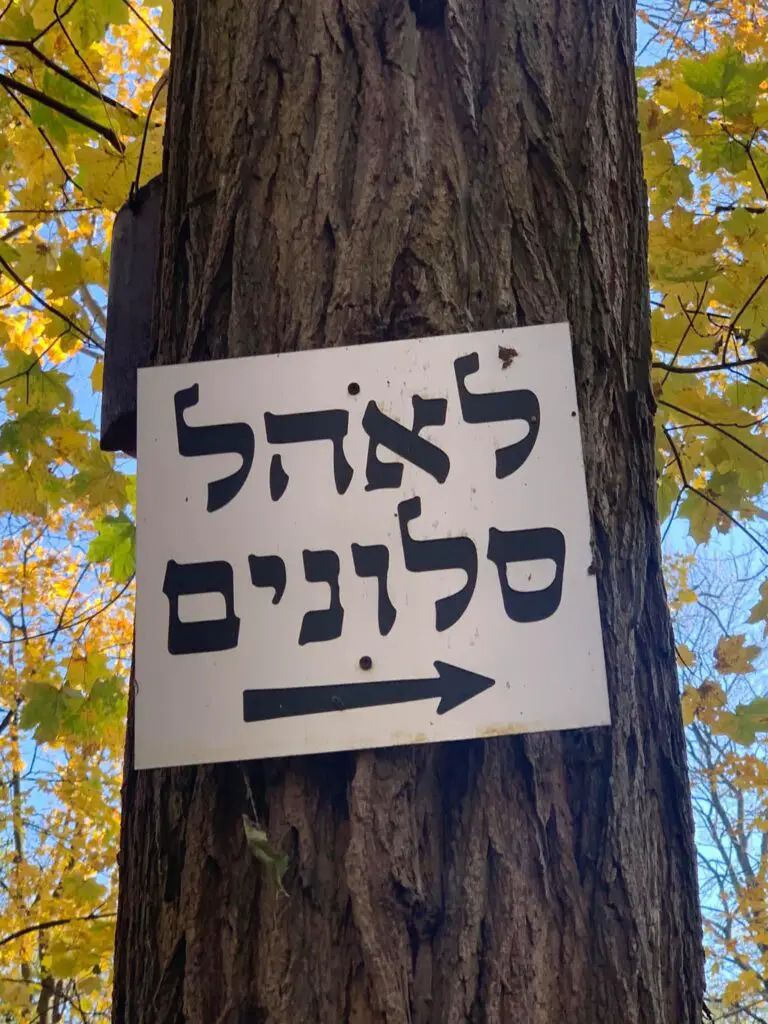
Not only did the German forces the place for mass executions and the burial of victims of Warsaw Ghetto, but they also used for the victims of the Warsaw Ghetto Uprising, and the Warsaw Uprising of 1944.
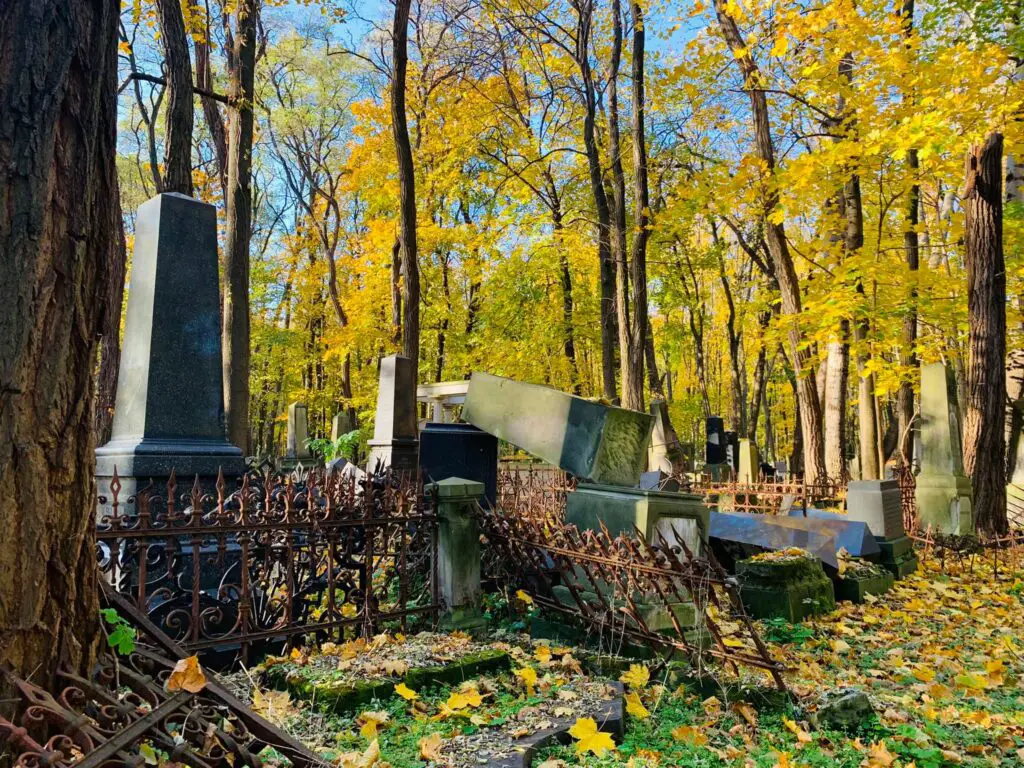
During the Warsaw Uprising of 1944, when the front line passed directly through the cemetery and you will see many headstones with bullet holes and scars from shrapnel.
The gravestones are a study within themselves, and you can spend your time just recording the symbolism of each one. Even if you can’t read the Hebrew inscriptions you can still learn a lot from the symbols on each grave. You often see a broken Greek-style column or a tree trunk. It symbolizes the sudden end of a life.
In a sense it has unintentionally become a museum and you can get lost in here but you will have the company of collapsing headstones, graves and incredible social history.
Etiquette
According to the Jewish Cemetery Association, the following points must be observed, and should be followed not only at the gravesite, but within the boundaries of the entire cemetery.
• Eating and drinking may not take place on the cemetery. This holds true for unveilings as well. The frequent, but unfortunate, frivolity that marks such occasions should certainly be discouraged. It is a violation of every code of honor.
• Dress should be proper to the occasion and the place. One should not dress to impress relatives who attend. When one visits the cemetery or the grave of a deceased, it is certainly not the time for scant or frivolous-looking dress, athletic attire, or work clothes.
• One may not step over or sit on the gravestone that directly covers a grave. One may, however, sit on seats near the graves or on roadside railings and gates.
• Flowers that, perchance, have blossomed on the grave itself may not be picked for use at home. Naturally, trimming the grave is permissible and commendable.
Address: 49/51 Okopowa Street, 01-043 Warsaw, [email protected]
If you like this article, then please follow us on Facebook, Instagram
Another Article From Us: Wayfarer’s Dole – 1000 Years of Tradition
